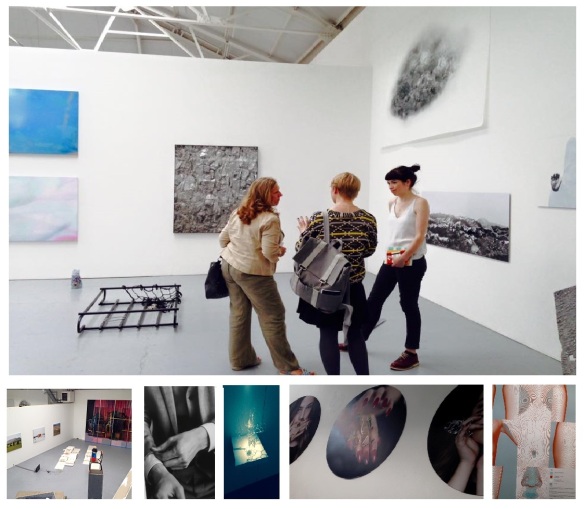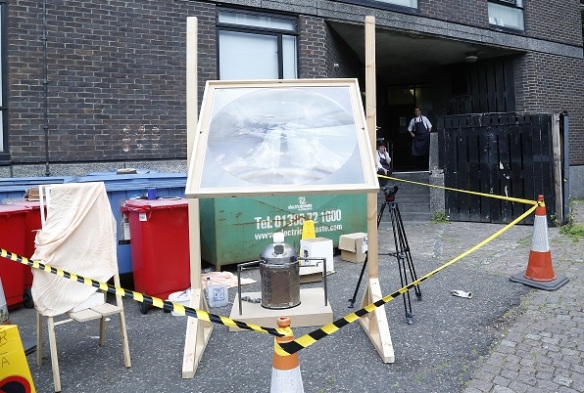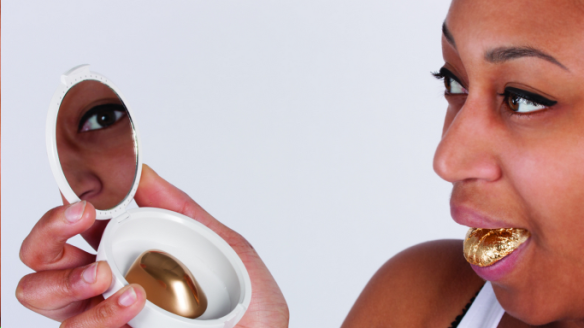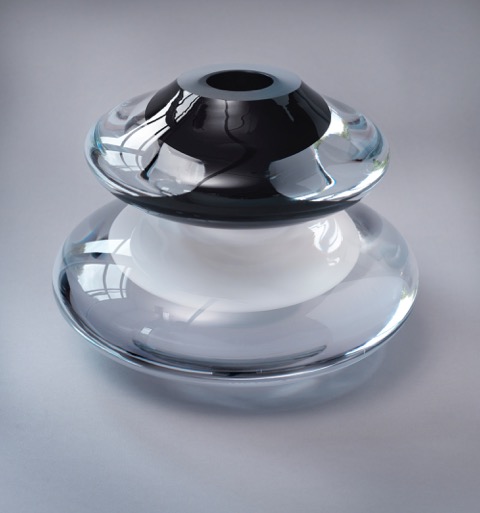Art is for everyone; and to prove the point the Royal College of Art (RCA) welcomed the public, without fee, to its Graduate Show 2015.
RCA Head of Communications & Marketing, Áine Duffy said: “This year saw the biggest ever graduating cohort – 648 MA, MPhil and PhD students in total, across six Schools: Architecture; Communication; Design; Humanities; Fine Art and Material.
“The Show Team, led by Dean of Fine Art Professor Juan Cruz worked tirelessly on every aspect – from ensuring that each student had the right space for her or his work to delivering the online catalogue, with 648 different profiles.”
The show featured work from its latest Alumna, across all disciplines; letting viewers wander from sublime sculpture to ridiculous renditions.
While performance art contrasted with material; the show had one constant, it was thought provoking. Throughout the exhibition artists used form to reflect preoccupations such as: fetishes, science and politics.
On the ground floor a huge print loomed over guests; its black and white puffs suggested tree canopies. Yet artist, Kate Fahey, explained the ‘trees’ were actually mushroom clouds, looming over Syria. She sourced aerial pictures of explosions before layering them into a dystopian textile.
She said: “The gap between what we see (and our reaction to it) and the initial, functional intention of the photograph on its capture is becoming further from our grasp.
“In the fragility of the work I reference both the ephemerality of the ‘poor image’ that ‘operates against the fetish value of high resolution’ and the instability of the subject matter.
“In its form and placement within space I reflect on our relationship with contemporary images – screen based perspectives, aerial, satellite and elevated views.”
While Fahey used excess to highlight atrocity, another graduate used it to harness energy. Ghanaian artist, Nana Asafua Dawson, used his home-land’s heat as inspiration to make a (huge) magnifying- glass furnace.
He said: “Back in Ghana I had worked with craftsmen who used an open- air, electric powered furnace to melt their wax and metal.
“I got to asking how craftsmen could work in an environment like this, without wasting so much fuel. So I came up with the concept of using heat conduction, conversion and rotation to harness the power of the sun.”
Dawson explained: “I bought a 1.1m squared lens; created a solar powered furnace; tested it in London; and it worked! I managed to get the lens to produce temperatures of 1500 and above. Then I used it to melt scrap metal, and create the jewelry displayed at the show.”
Nature again inspired metalwork, as artist Victoria Shennan displayed her jewellery and musical- collaboration about bacteria. The graduate first researched the quantities of human bacteria, before making jewellery that reflected its proportion and place in the body.
She then sought to replicate its patterns, in a musical collaboration with Exeter University Medical School Research Fellow ; Dr Linda Long, and creator of Molecular Music, Jack Hurst.
Shennan said: “The body is a landscape, host to many habitats, vastly uncharted, and part of a wider ecosystem. Through the medium of the body we experience the world.
“My exhibition asks: ‘what if you could experience the world hidden in plain view and hear the rhythms of nature that underpin existence or weigh the value of these invisible worlds?’”
Invisible forces also acted as inspiration for artist Alexander Duncan’s installation. At the show, Duncan flooded an area and added (partially concealed) machinery to create a fake tide.
He said: “In this work a loading ramp becomes a slipway; somewhere intertidal and uncanny. An artificial lapping wave powered by a pointless machine.
“I’m fascinated with how people react to water; to want to be close to something potentially harmful and control it.”
Control is a theme which resurfaced in artist Yunjung Lee’s work. Her jagged jewelry showcased rings and necklaces with fangs, snakes and stilettos.
She explained: “I found that there are two female stereotypes: the princess and the monster. Barbie doll is an example of the princess; Medusa and Vagina Dentata the monster.
“I fused the two different representations and created something in between. Throughout the project I tried to shed the new light on the representation of women, and make the jewellery that can be part of the wearer’s identity.”
Identity formation also prevailed in RCA photographer Ruidi Mu’s work. Mu’s centrepiece was a wooden hut, papered in passport photos of similar looking people. These pictures sat behind test tubes (containing hair) in a combination that suggested cloning.
Mu said: “My works revolves around the idea of ‘happening’; trying to find the boundary between art and life, and shrinking it as much as possible; using photography to recreate the environment.”
Another artist using variable environment to manipulate form was Isabella Kullmann. Kullmann’s glass vases and bowls showed clean edges that responded well to light.
She said: “This body of work is all about the glass object in its domestic environment or architectural setting- the play of light, the fall of shadows, the reflection on the surface, and the refraction of colour.
“These transitory properties stand in contrast to the permanence of the material itself. The situated environment becomes active: adding colour, movement, and light to the object, while the hardness of the glass dissolves into the space surrounding it.”
Reactive and proactive in parts, the RCA Graduate show offered something for everyone.
Head of Communications & Marketing, Áine Duffy concluded: “The RCA 2015 show has been an unmatched showcase for the talented designers and artists graduating this year.”








